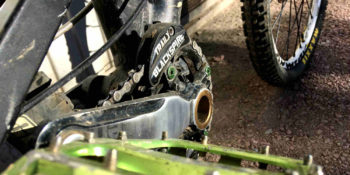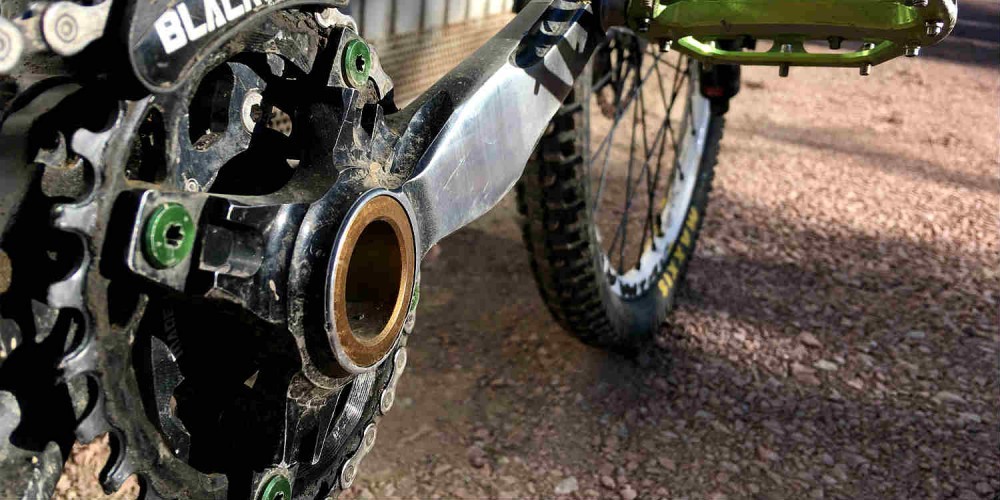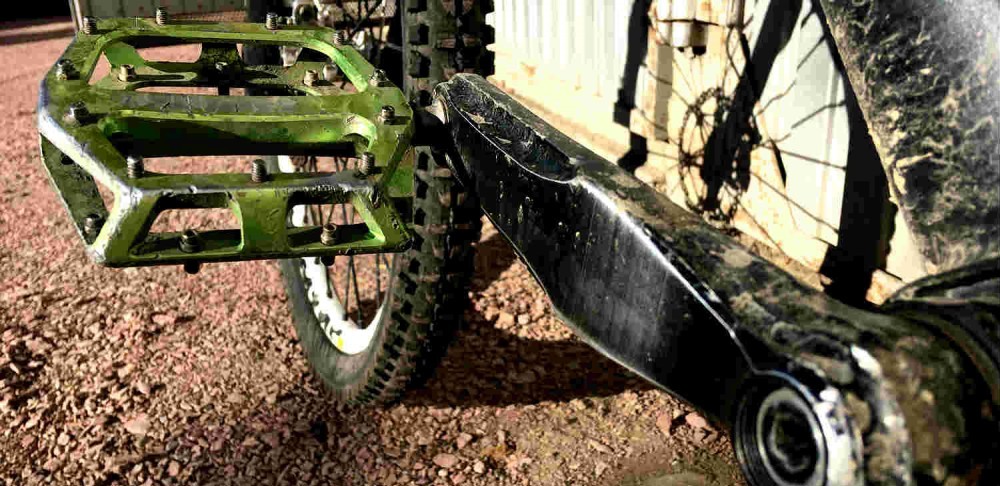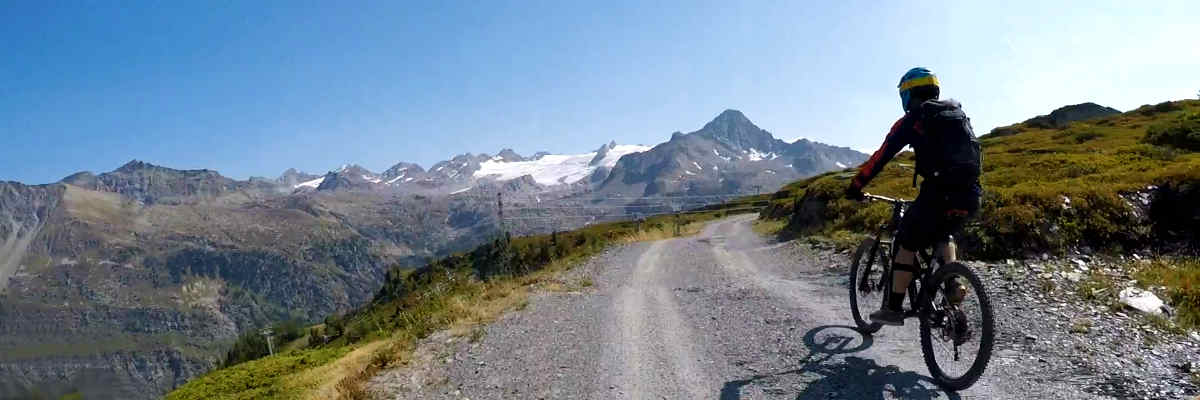Mountain Bike Crankset: Everything you need to know
When you are considering upgrading your bike, you may want to consider changing your mountain bike crankset. Better quality cranksets will be advantageous and improve your riding experience. An upgraded mountain bike crankset will make your pedaling more efficient, help you go faster and make gear changing smoother. When upgrading, you may be able to choose a mountain bike crankset that will fit you better too.
Mountain Bike Crankset Characteristics
There are a few variables when it comes to a mountain bike crankset. The number of chain rings, their size and the length of the crank arms themselves. You will find that it is quite common for manufacturers to equip bikes with triple chainrings. These are well-known to be awkward and have a tendency to be unreliable. Riders often replace them with double or single chain rings.
Gear Ratios and Chainrings
Your gear ratios rule how much effort you use to turn the wheels. The ratio is the number of teeth on the front chainring to the number of teeth on the rear gear. Here is some terminology:
Higher gearing – Refers to the bigger front chainring and the smaller rear gears. This requires more effort, but generates more power and speed. This is ideal for riding down hill and on flat areas.
Lower gearing – Refers to the smaller front chain ring and the larger rear gear. This requires less effort, but generates less power. This is useful for climbing.
Therefore, when you are changing your mountain bike crankset, you need to consider the sizes available and compare them to your rear gears.
How Many Chainrings?
The more chainrings you have, the more gearing range you have. However, as I said before, many riders are reducing their triple chainrings to double or single ones. This is down to simplicity and reduced weight. Personally, I use a single oval (I’ll come to that shortly) chainring on the front. I went to a single chainring to make my bike more simple, with less to go wrong. Additionally, with the terrain I ride, having two or three chainrings leaves my bike susceptible to dropping the chain.
Click here to see the advantages of fitting a chain guide
Chainrings have also got larger over the years, this means that there is less need for double or triple chain rings. Therefore, as long as you have a wide enough gear ratio on your rear wheel, a single chainring should be enough for most people.
Oval Chainrings
In Theory
The oval chainring is mounted on the crank so the bigger part gets the most force on the down-stroke. Doing this, puts the narrow part at your mid-stroke. This puts the wide part of the chainring in line with the down-stroke of your front foot, when you are using your quad muscles.
If you are clipped in, you can pull up with your hamstrings at the mid-stroke at the narrow part of the chain ring. This is the weakest part, as fewer teeth are in use.
Still with me?
This action has a great effect. If you run a 32 tooth chain ring, you are pushing down with the equivalent of a 34 and up with a 30. This is a more efficient way of pedaling, as you maximise effort where it is needed. This will balance out anyone’s inefficient spinning action and reduce fatigue.
In Practice
To start off with, it does feel a bit odd. However, after a while (on your first ride), you won’t notice the different action. You will notice on long rides that your legs will fatigue less. You won’t find them any faster than standard chainrings, but you should be able to ride for longer.
The main advantage, is that you will find that you will be able to get the power down quicker on technical sections. This method also lets you get away with being in the wrong gear a bit more, when you come up to unexpected climbs.
Oval chainrings are ideal for enduro riding. I would recommend using a chain guide, as the chain tension is constantly changing.
Crank Arm length
The standard mountain bike crank arm length is 175mm. However, smaller frames and ladies bikes are generally 165mm. You can buy longer mountain bike crank arms, as they go up to 180mm. Sizes go up by 5mm. Short arms are good for pedaling up hill, while longer ones are better for downhill.
The size of your mountain bike crank arm should be proportional to your leg length. Therefore, if you have little legs, go for shorter crank arms. To be really sure what size mountain bike crank arm you should be using, you can get a “bike fitting” at a shop. This can be quite expensive, but you will know all the details for choosing a bike or upgraded components.
Material
Mountain bike cranksets are made from two components, the chainring and crank arms. They may be made from different components, but you can expect, carbon, aluminium, titanium or various types of steel.
When you are upgrading your crankset, the materials are worth considering. If your bike as a lot of carbon fibre on it, you may want to go for carbon crank arms. They will be lighter and stiffer than steel, and it will look better, keeping with the theme. However, I’m sure you know, but carbon parts are a lot more expensive.
Steel is the cheapest and heaviest material to use, however, try to go with chromoly steel. This is because, other forms of steel are not as durable.
Aluminium is a good compromise, as it sits in between carbon and steel in regard to durability and price.
Are you going to upgrade your mountain bike crankset?
Your mountain bike crankset is one of those subjects that isn’t too difficult to understand. However, you do need a little bit of information before you buy. You also need to remember, that you will need to change your chain to one that is compatible.
Let me know your thoughts and questions in the comments section below.







Pingback: Mountain Bike Groupsets: Everything you need to know -
Well, it’s not quite everything I need to know. 😉 I’m trying to replace my SRAM X1 1000 crankset with 175mm length, BB30 bottom bracket and 32t single chainring. I’ve seen in other articles that you have to make sure your new crank matches your old bottom bracket or replace the old BB with a new compatible BB. But then how do you know if the new BB will fit in your frame?
I’m looking at a crankset that I found for sale but I’m not sure whether it will fit my bike. It’s listed as an SRAM GX 1000 1x crankset, 175, BB30, 32T without much more info in the description.
Any useful input would be much appreciated.